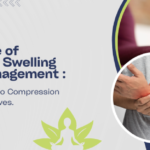Introduction
Orthopedic braces are devices that help to stabilize injuries and promote healing. A doctor or other healthcare professional typically prescribes them, and they can be very useful in treating certain types of injuries. However, if you don’t take proper care of your brace, it may become less effective and even cause your brace, it may become less effective and even cause additional problems! Here are some tips for taking care of your orthopedic brace so that it can do its job properly:
Committing to caring for your brace
You must take care of your brace as soon as you start to recover. Braces are an essential part of the healing process, so you’ll need to know the following tips and instructions:
- All instructions given by the manufacturer of your orthopedic brace must be followed carefully. Each brace contains special instructions on care that are specific to its construction and materials used in manufacture, so you need to know what they are before using or cleaning your device.
- If possible, buy at least one or two pairs of socks specifically designed for use with braces that will prevent blisters from forming on sensitive skin when medical clothing such as these is applied to it!
- Stay up to date with regular monitoring appointments, which usually happen every 6 months between doctors who prescribe anti-inflammatory drugs such as ibuprofen or physical therapists working closely with patients recovering from sprained ankles and torn ligaments etc.
Use the brace with care
- The brace should be used according to your doctor’s instructions.
- Avoid overexertion,
- Don’t take any action in the area at risk of further injury.
Machinery used for driving and operating vehicles shall be included. Avoid using alcohol or other drugs and Stay active. The exercise can help you avoid pain and stiffness, improve your mobility, strengthen muscles in the area that’s been hurt, enhance balance for better coordination, and help maintain optimum health. Check with your doctor about the activities that might be appropriate for you if you are suffering from chronic pain or an injury affecting your ability to perform regular exercises.
Wash and clean your brace with the right products
- Wash the brace with a little soap because aggressive soap can damage its materials.
- When washing your brace do not use bleach or fabric softener, which may cause it to darken over time and make it appear worn out.
- You may also use warm water mixed with 1 cup of baking soda or detergent to clean the inside of your orthopedic brace or liquid dishwashing soap. Be careful to not drain this part of the device too long, because it should only be submerged for about 30 seconds at most!
There are some things you should never do with your brace
- Don’t wear your brace while swimming.
- Don’t wear your brace while playing sports.
- Don’t wear your brace while doing household chores (cleaning, etc.).
- Don’t sleep with your brace on, as this can cause irritation and even skin breakdown over time.
If you need to wear a brace for an extended period, talk to your doctor about how best to care for it–and what kinds of activities would be safe for you in that situation!
When you’re wearing your brace, be sure to check for any signs of irritation. If you notice redness or a rash, take off the brace and contact your doctor right away. They may recommend changing how often you wear it, or they might prescribe an ointment or cream to use if contact with the skin irritates.
Avoiding further damage to an existing injury
If you have an existing injury, avoid using your brace. This is because the added weight of the brace can cause further damage to your joint or limb. It is also important to note that if you start wearing a brace with an existing injury, consult with a doctor before doing so.
While braces are generally safe and effective when used correctly, it is important for people who suffer from arthritis or other conditions that affect their mobility not only to wear one but also to take care of it properly so as not to cause further damage in those affected areas of their body
Keep up with your follow-up appointments
Follow-up appointments are an important part of your treatment plan. Your doctor will be able to evaluate your brace, ask questions, and make adjustments as needed. The following tips can help you stay on track with these appointments:
- Call if you have questions or concerns about your brace or how to wear it properly
- If possible, schedule follow-ups at the same time each month so that you don’t forget about them
- Prepare for each appointment by writing down any issues that may need addressing before going into the office
To get the most out of your brace, make sure you keep it clean and safe at all times
- Do not wear your brace in the rain or shower. Even if you’re just walking outside for a few minutes, moisture can cause rusting on metal components and fabric deterioration on Velcro straps. If possible, store your brace indoors when not in use so that it doesn’t get wet by accident.
- Don’t wear this type of orthopedic device in pools or baths either–the chemicals found in these places (especially chlorine) can damage its parts over time, making them less effective at supporting your body during exercise or everyday activities like walking around town or doing chores around the house!
- Also remember: Don’t take off any part of this product while exercising outdoors because doing so could result in serious injury due to lack of support provided by wearing both feet evenly balanced against each other instead of just one side being off balance due to missing part(s).
Conclusion
Keeping your brace clean and safe is important, but there are also some things you should never do with it. Avoiding further damage to an existing injury is important as well, so make sure that you keep with your follow-up appointments. If you have any questions about caring for your orthopedic brace be sure to speak with our team at .



